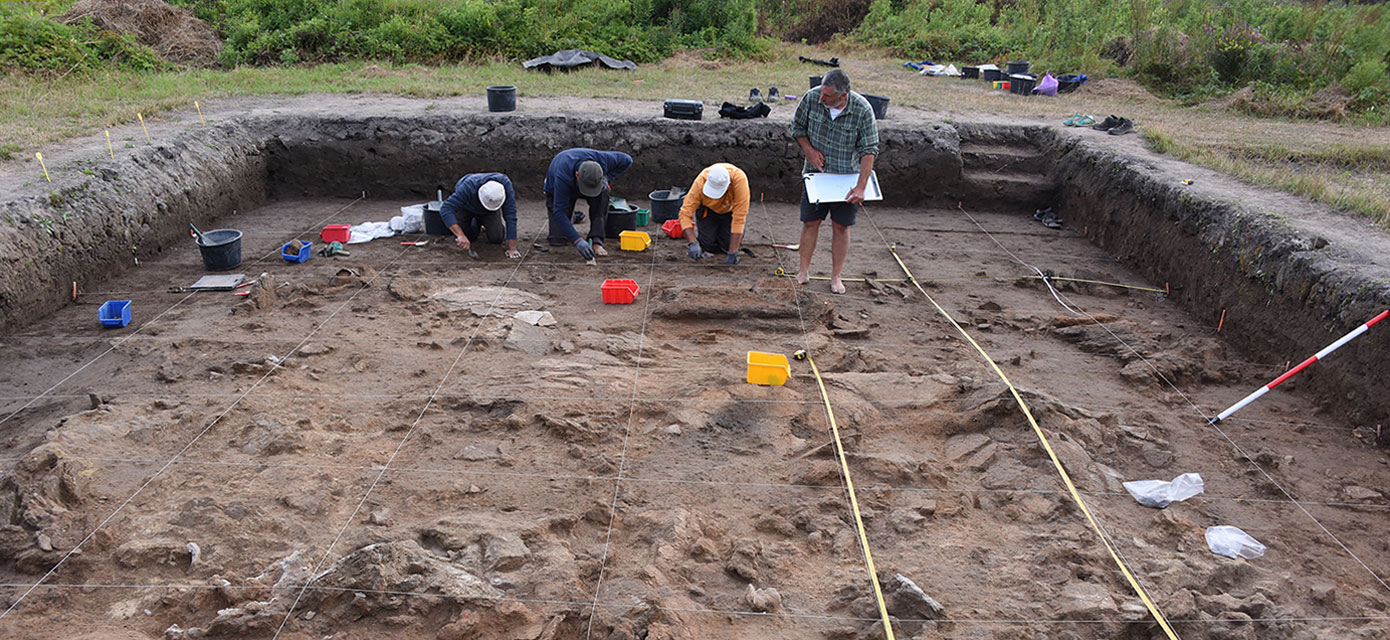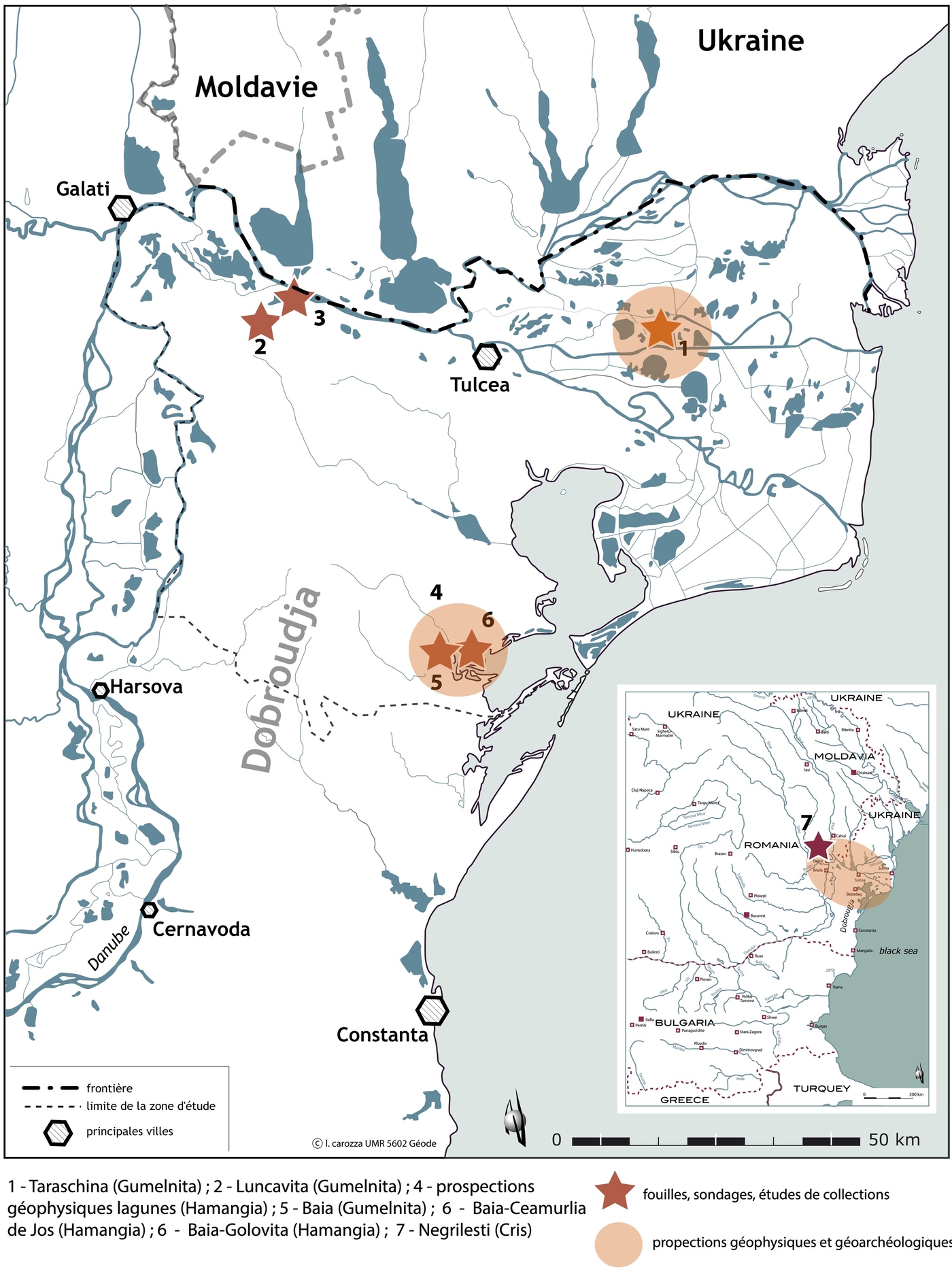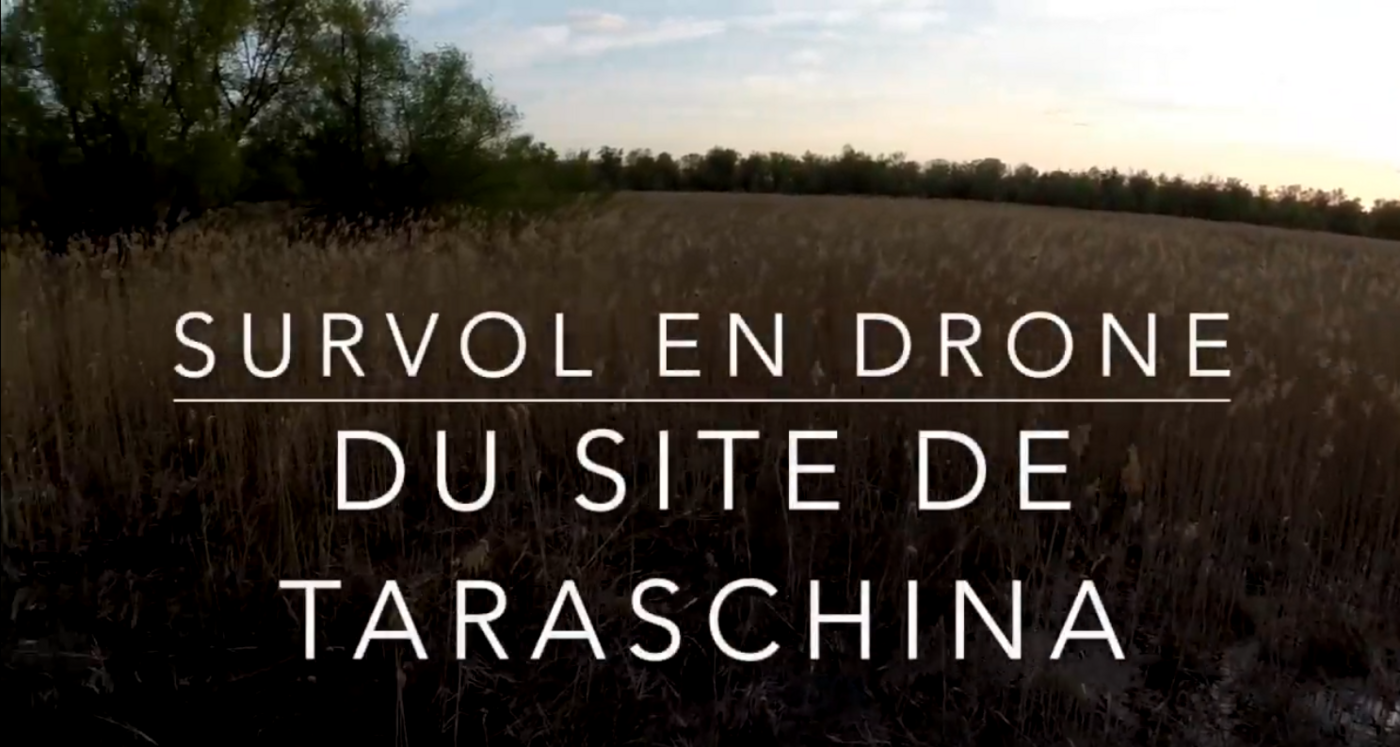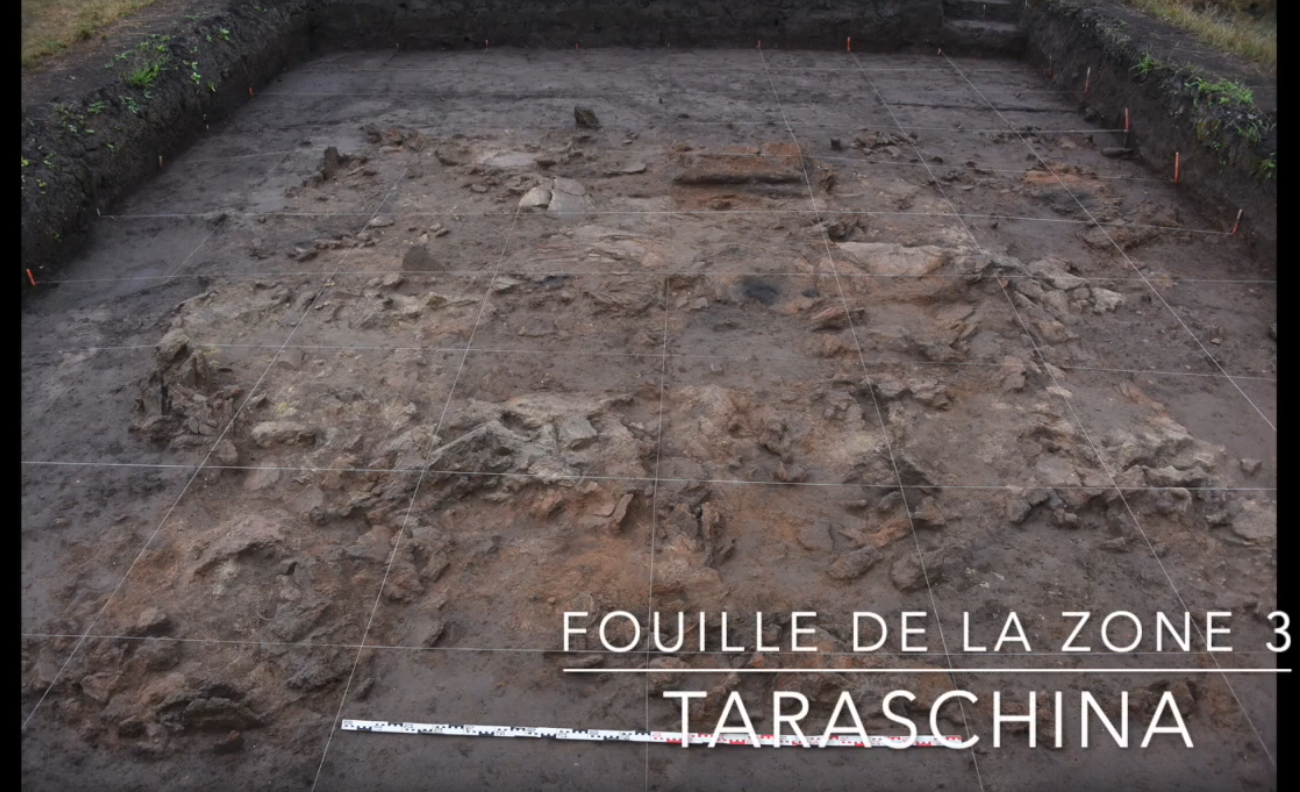The underwater tell of Taraschina
Located at the heart of the present-day Danube delta, the Chalcolithic tell of Taraschina provides striking evidence of Prehistoric landscapes now immersed by the waters of the Danube. The Chalcolithic communities that lived in the area in the 5th millennium BCE experienced changes to their environment that forced them to alter the way they lived.

During the Holocene, which began 8000 years ago, sea-level rise in the Black Sea led to the formation of the Danube delta. It led to the flooding of areas once occupied by Neolithic communities. The excavations carried out on the tell of Taraschina have shed light on these underwater Prehistoric landscapes in the delta area.
Study of the Prehistoric landscapes
The work of the French-Romanian "Archaeology of the Danube delta" mission puts the focus on the study of the flooded Prehistoric landscapes of the Danube delta. Since 2010, our multidisciplinary team has been excavating the central area of the Danube delta, especially the underwater tell of Taraschina, in the district of Maliuc. A tell is an artificial mound formed by various layers of human habitation. During the Holocene, sea-level rise and the progradation of the deltaic system changed the geography of the land occupied by societies along the Black Sea coast and the area currently covered by the Danube delta. Part of the land occupied humans was flooded, which is why some Neolithic and Protohistoric sites are now underwater or under the sediments of rivers and deltas.
Sea-level rise in the early Holocene
In the Black Sea, after the lake phase, the reconnection of the Black Sea to the Mediterranean Sea some 10,000 years ago led to sea-level rise. In the early Holocene – 8000 years ago – the rapid rise of the Black Sea, by tens of metres, flooded part of the continental platform and formed the Danube delta. This phenomenon caused the flooding of areas once potentially occupied by Neolithic and Protohistoric communities. Excavations carried out by our team in the Danube delta, including in Taraschina, confirmed the hypothesis of the existence of Prehistoric landscapes, now underwater in the current delta area.
Archaeological reserves
The possibility of discovering archaeological remains in the areas now underwater is influenced by different geographical contexts. The central area of the delta with its sand ripples caused by tidal currents are very likely to contain Prehistoric and Protohistoric sites, as attested by the excavation of the submerged tell of Taraschina. Coastal areas, lagoons and lakes offer the same potential. The lakes region, downstream of the Danube (the blocked delta), is currently covered by alluvial deposit from the Danube which were deposited after the Neolithic/Protohistoric period. This high-potential area has not yet been the focus of intensive investigation.
We assessed the importance of archaeological heritage within the Danube Delta Biosphere Reserve, all periods combined. The delta, in the strictest sense of the word, revealed Chalcolithic, Protohistoric, Antique and Medieval sites, attesting to the length of its occupation. The land around the present-day wetlands contains a wealth of archaeological sites attesting to the intensity of human settlement and its appeal to past populations. Research into ancient palaeogeographic changes and alterations in the coastline show that a large number of archaeological sites potentially exist in the areas now covered by delta sediment and coastal wetland areas.
The Chalcolithic underwater tell of Taraschina in Maliuc
In the field, the excavation of the Chalcolithic tell of Taraschina is the cornerstone of the "Archaeology of the Danube delta" mission. This operation is generously co-funded by the Romanian Ministry for Culture and National Identity, which supports this outstanding initiative. A major excavation was carried out for 30 days in September 2019.
A building destroyed by fire
The excavation currently covers an area of 120 m2. We focused our resources on a surface area of 80 m2, corresponding to a building that had suffered fire damage at some point in time. The aim of this excavation is to investigate the building we know was partially destroyed by a fire around 4350 BCE, at a time when the tell of Taraschina was temporary abandoned. The site’s exceptional state of conservation made it possible to address the question of the destruction by fire of habitation units - a common feature of tells in this period.
Our goal is to describe the process of dismantling this habitation unit in order to differentiate between anthropic facts and more natural processes - taphonomy and post-depositional processes. The excavation is focused on a quantitative approach to each of the elements found within the destruction layers. To do this, the architectural elements are identified and quantified in the field and recorded in a database.
Innovative ways to adapt to environmental change
The excavations carried out in 2019 revealed a section of rubified wall from a burnt habitation unit, and a combustion structure (front hearth) abutting the building wall. Archaeologists found deposited containers in-situ along the rubified walls. The most striking finding were the dwelling floors. Part of the habitation unit had a crawl space, that is, wooden planking had been placed over the rammed-earth floor. This construction method may reflect an adaptation to changes in environmental conditions around 4350-4300 BCE, when floods became more frequent.
To analyse this destruction layer, we produced a 3D digital clone using a 3D ground-based laser. In another important development, we unearthed several copper finds, probably waste, that attest to the production of small copper objects outside the habitation unit, in a work area. Once the structure has been analysed, a stratigraphic test pit will be dug under this unit since coring identified a habitation structure that may be older than the one already investigated.
The project is supported by the French Ministry for Europe and Foreign Affairs on the advice of the Excavation Committee (Commission des fouilles).





